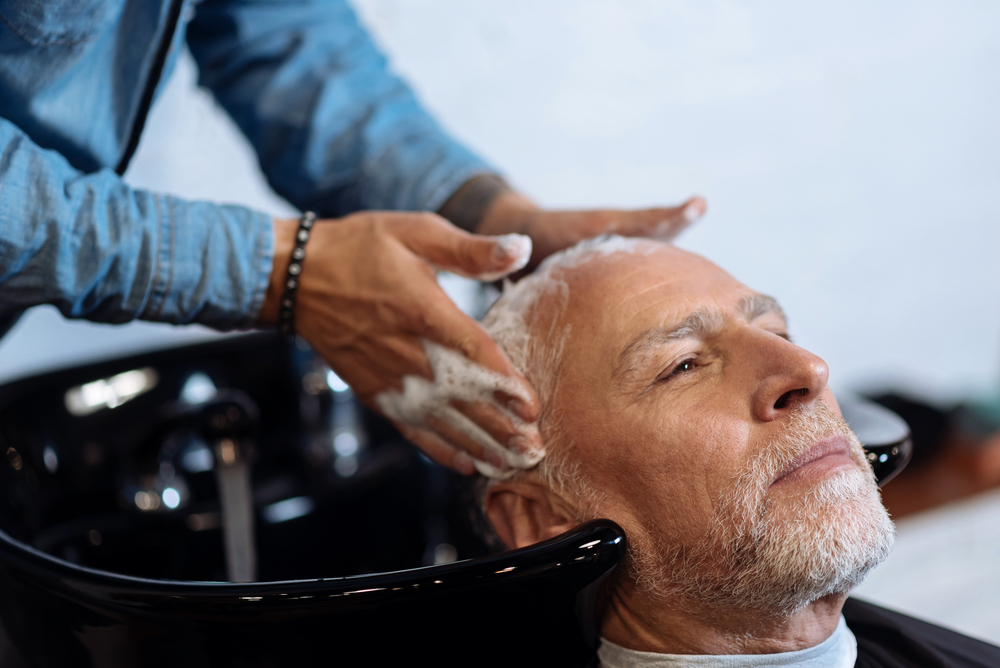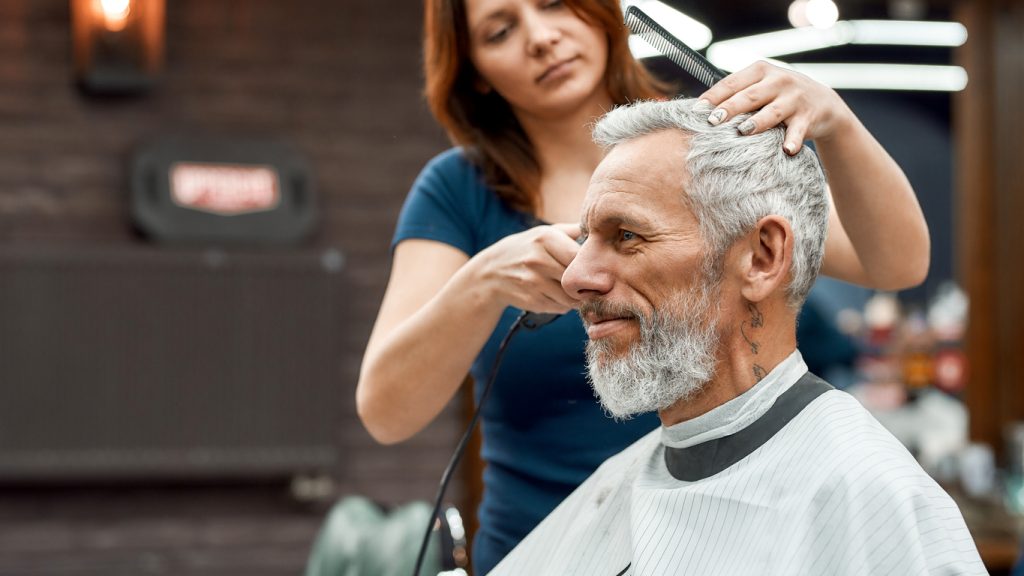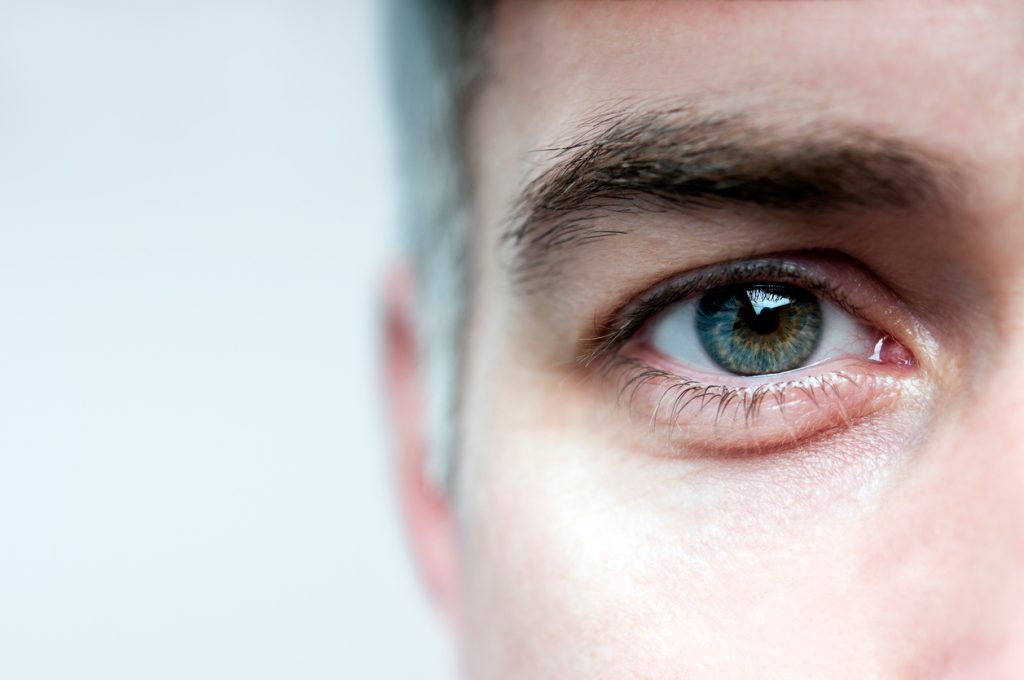7 Stylist Secrets for Salt and Pepper Hair

Out of all the ways our bodies change as we age, the first sign of gray hair is one that stands out above the rest. While it can start at any age, losing our hair pigment is an inevitable part of life that more and more people are choosing to embrace with confidence and flair. If you’ve noticed flecks of silver in your locks lately, it can be an opportunity to give yourself a major style upgrade that will elevate your look to another level. Read on to discover the best stylist secrets for salt and pepper hair.
READ THIS NEXT: If You’re Over 65, This Hairstyle Is Aging You, Experts Say.
1
Start a new washing and conditioning routine to keep your hair manageable.

When strands of your hair start to go gray, a lot more is changing than just the way it looks. Stylists say that you’ll likely need to reconfigure how you wash and maintain your locks every day with new specialized products.
“If your ‘salt strands’ feel dry or become more unmanageable, it’s a clear indication your hair needs more moisture, so amp up the hydration,” says Lisa Abbey, founder and CEO of Strength x Beauty. “Switch to a hydrating shampoo and daily conditioner, adding in a heavier conditioning mask once a week. We also recommend alternating with a sodium and sulfate-free conditioning wash as both sodium and sulfates dry out the hair even more—but for super dry hair, we suggest you use the co-wash every time you cleanse.”
But it’s not just about what you do in the shower. “Also important: Make sure you’re drinking enough water to hydrate from the inside out,” Abbey says. “And it’s a great idea to have your stylist provide a deep moisturizing treatment with every salon visit to keep your strands soft and manageable.”
2
Cut your hair more often.

Most people would agree that there’s nothing quite like the look you get walking out of the salon with a fresh cut. And regardless of what color your hair may be, you likely keep a reasonably regular schedule to get trims. However, you’ll probably have to shorten the time between visits if you want to keep your salt-and-pepper hair looking its best.
“Because gray hair tends to be drier in texture, it will be prone to split ends, and because the texture is different, your hair will lose its shape more quickly,” says Abbey. “Women should schedule a trim at least every four to six weeks, and men every two to four weeks, depending on length. Just remember: The shorter your hairstyle, the more often you’ll need to have it shaped.”
READ THIS NEXT: If You’re Letting Your Hair Go Gray, Do This First, Experts Say.
3
Lean into your newly gray hair.

Noticing your first few strands of gray hair coming in can come as a bit of a shock. For some people, it can even lead to desperate attempts to cover up the changes with dyes or coloring. But experts say there’s nothing wrong with embracing your new look full throttle and seeing how it suits you.
“If your hair is natural—without any dyes—just let them come in, and you can decide as the hair grows in,” Dian Griesel, PhD, influencer, Wilhelmina model, and founder of Silver Disobedience, tells Best Life. “If you like the look, go with it—though you might be surprised that you need a few new outfits or a change in makeup. That’s because silver or gray hair changes skin tone, and the colors we wear will make those tones reflect different hues.”
But there are other ways to make the move over to your new natural look. “Silver gray hair is so trending right now, you may want to just go all the way!” says Abbey. “Plus, it will help you transition if you’re already on the way to all-gray. But this is best done in-salon, as lightening dark hair to the correct tone can be very tricky. Ask your stylist to pop in a few lightening foils throughout your darker areas and tone them to match and brighten to see how you like it!”
4
Consider taking on new hairstyles.

As you’re starting to embrace your new hair color, it’s only just as natural to want to try a new style to help it look its best. And while everyone has their own tastes when it comes to their personal look, stylists recommend starting with a few basic cuts to see how they suit you.
“For men, keeping the hair shorter and tighter on the sides and around the hairline where gray hair is usually the most troublesome creates a tailored, professional look,” suggests Abbey. “Leave the top a bit longer for a smooth pompadour or tousled, more casual style.”
“For women, try a stylish short pixie, a medium-length sleek classic bob, or a longer layered bob for great gray hair at any length!” she adds.
For more style advice delivered straight to your inbox, sign up for our daily newsletter.
5
Going gray with dyed hair can be a different process.

For some people, the first sign of gray hair can cause a mad dash to the salon to book a dye appointment. But for those who have been changing their natural hair color for a while, experts say there’s a different process for letting your new natural look come through.
“If your hair is colored, going gray involves more decisions,” says Griesel. “For example, you will have to decide if you want to let the growth reflect the difference between your dye and the natural hair color. To navigate this, you might consider either a new shorter haircut or a layered style.”
“Other options are using wash-out hair colors—such as 28-day rinses—until the growth gets to a length you’re comfortable with, then trimming off the remaining dyed hair, and then stop using the rinses,” she suggests. “If you choose to go the rinse route, gradually go lighter in the color you choose every couple of months. Your silver strands will shine through the dye—looking like expensive highlights.”
6
Don’t forget your eyebrows.

It can be easy to forget that your scalp isn’t the only place on your head where hairs can go gray. Stylists say this can actually be one of the trickier elements of phasing into your new style, and that a bit of preparation might be necessary.
“Even when your hair looks great gray, white, or silver, your eyebrows typically do not,” says Abbey. “If they’re salt and pepper, they can look spotty and thin; if they’re completely white or gray, they disappear.”
Fortunately, you can likely take care of the problem at home yourself. “A quick fix is to brush on a bit of Just For Men easy comb-in color—in your natural hair color shade—whenever needed to keep those greys at bay,” Abbey suggests. “Typically, brows should be the same level as your natural hair color or one shade darker. If you’re blonde, use a light neutral brown.”
READ THIS NEXT: 5 Tips for Having Bangs Over 60, According to Stylists.
7
Make the ultimate decision for yourself with complete confidence.

Noticing your first gray hairs can sometimes make it feel as though you’re being forced to take on a new look. But if you look at it the right way, experts say you’ll wind up coming to the decision that makes you feel best.
“To gray or not to gray is a deeply personal decision,” says Griesel. “Do it, and plenty will freely share their opinions that you look old. Do it, and others will tell you you’re rocking it. Do it, and you’ll be surprised for a long time whenever you look in the mirror!”
“Color or not, silver or not, hair or not: You look marvelous when you put on a smile,” says Griesel. “So wear that, laugh, and do whatever you decide to do with your hair. Remember: you can always still color it or shave it off altogether! It’s one of the easiest commitments we’ll ever make because it grows!”